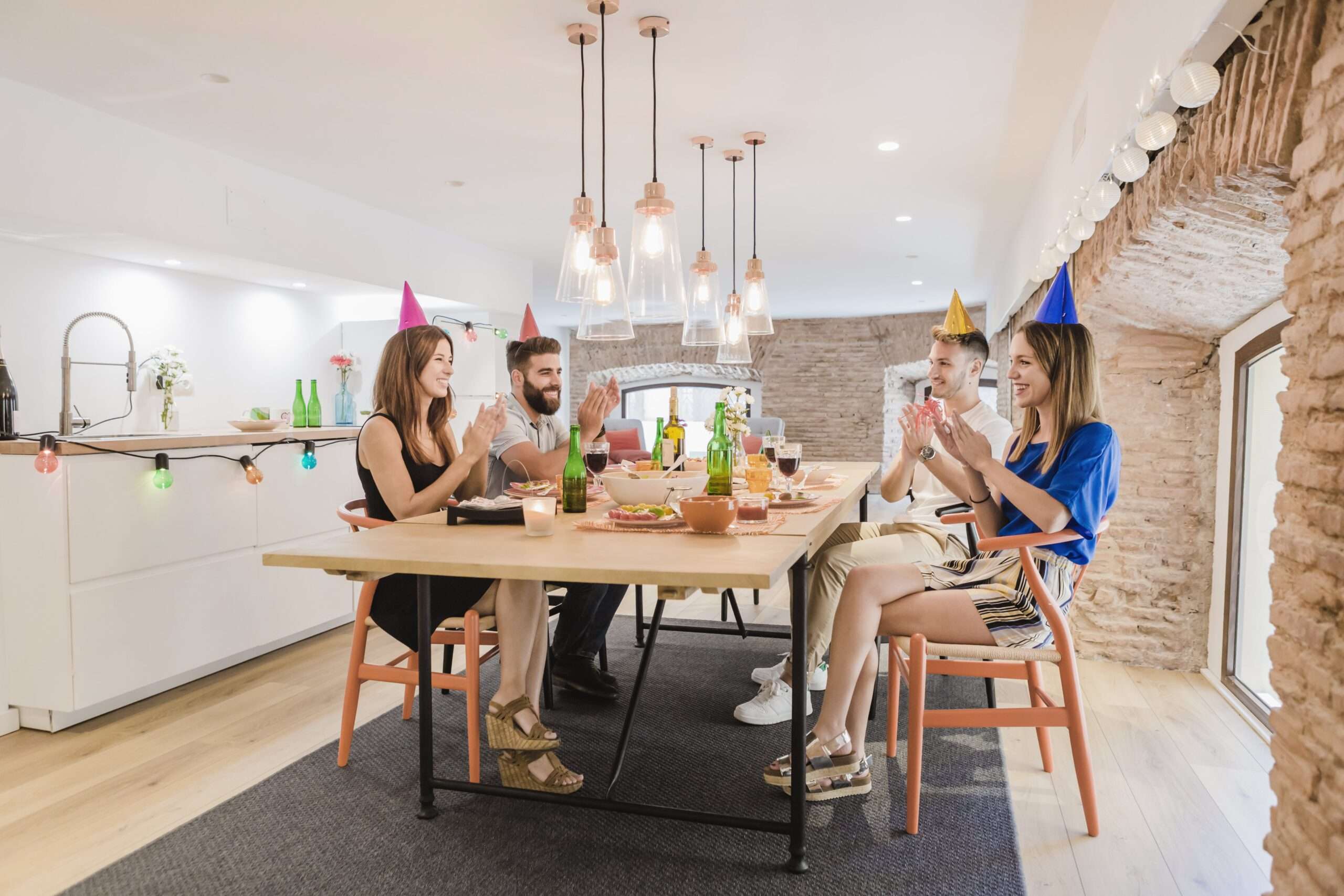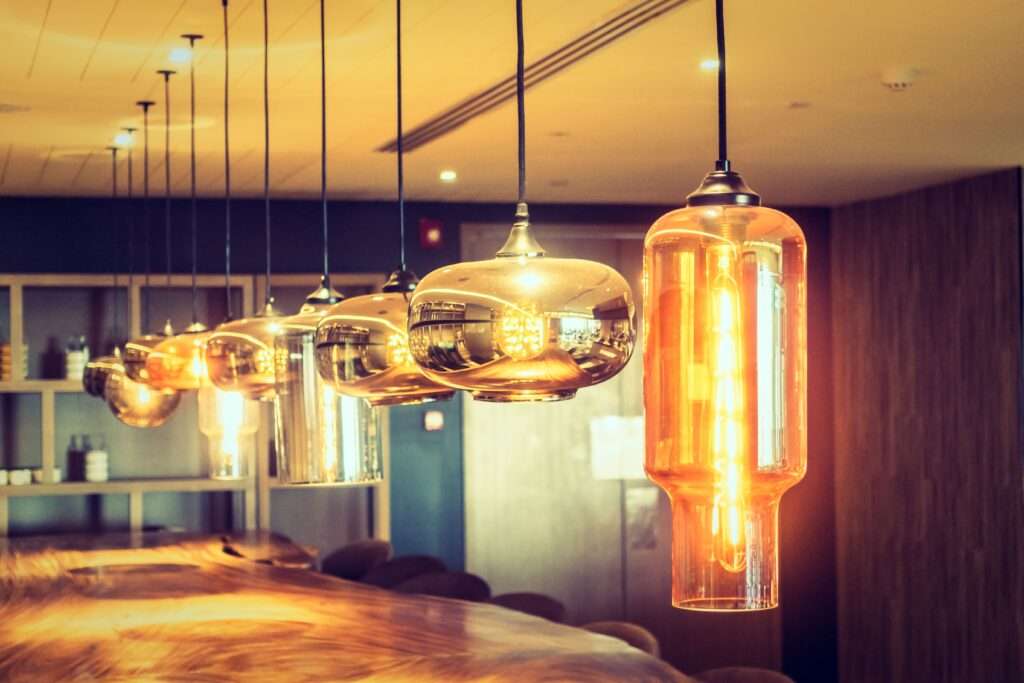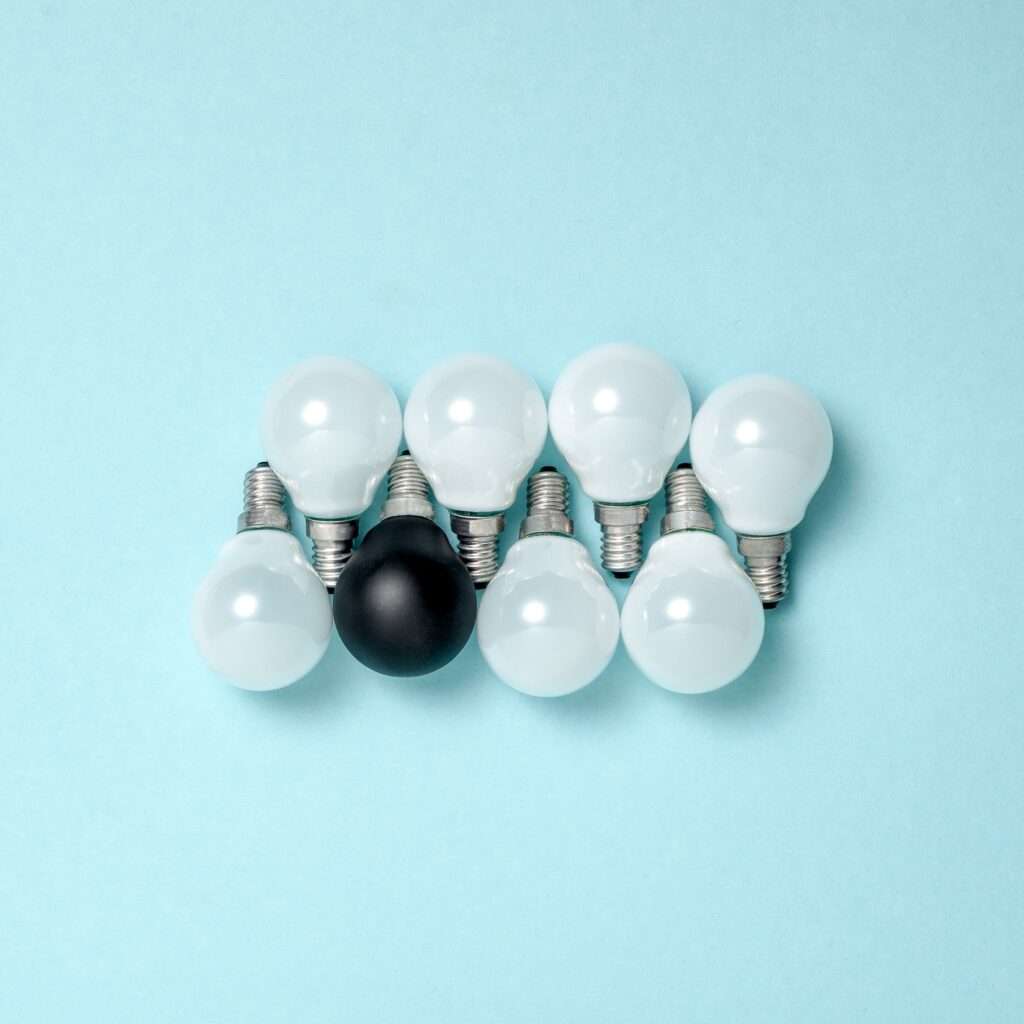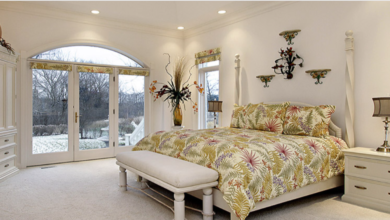Choosing the Best Light Bulbs for the Dining Room No:1 Guide

Discover the perfect dining room ambiance with our guide on choosing the best light bulbs. Enhance your dining experience with the right brightness, color temperature, and style. Create a stunning and inviting space for every meal. Let’s light up your dining room!
Understanding Different Types of Light Bulbs

Incandescent Bulbs:
Characteristics and Features:
- Heats a filament until it glows in order to produce light.
- Warm and soft light with a color temperature typically around 2700K.
- Instantly reaches full brightness when turned on.
- Available in various shapes and sizes.
Pros:
- Affordable upfront cost.
- Easy to find and widely available.
- Dimmable options for adjusting brightness.
Cons:
- Shorter lifespan compared to other bulbs.
- Least energy-efficient option.
- Prone to generate heat and may pose safety risks.
Compact Fluorescent Lamps (CFLs):
Characteristics and Features:
- Utilizes gas and phosphor coating to produce light when electricity passes through.
- Cool white or warm white light options available.
Pros:
- Energy-efficient and reduces electricity bills.
- Lasts longer than incandescent bulbs.
- Wider range of color temperatures available.
Cons:
- Contains small amounts of mercury, requiring proper disposal.
- Initial cost is higher compared to incandescent bulbs.
- May flicker or produce buzzing sounds.
Light Emitting Diodes (LEDs):
Characteristics and Features:
- Illuminates when electrons move through a semiconductor material.
- Energy-efficient with the lowest power consumption.
- Available in various color temperatures and hues.
- Instantly reaches full brightness upon switching on.
Pros:
- Highly energy-efficient, reducing electricity costs significantly.
- Extremely long lifespan, minimizing frequent replacements.
- Environmentally friendly with no hazardous materials.
Cons:
- Initially more expensive than other bulbs.
- Some LEDs may have limited dimming capabilities.
- Potential for blue-light emissions, which may affect sleep quality.
Considerations for Best Light Bulbs for the Dining Room

Light Bulb Color Temperature:
The color temperature of light bulbs significantly impacts the ambiance and mood in your dining room. You have various options to choose from, including warm white, cool white, and daylight. Warm white bulbs emit a soft and inviting glow, ideal for creating a cozy and intimate dining experience. Cool white bulbs offer a brighter and more neutral lighting, fostering a vibrant and energetic atmosphere.
Lumens and Brightness:
Understanding lumens and brightness ensures your dining room is appropriately illuminated. Lumens measure the total amount of light emitted by a bulb, while brightness refers to its intensity. Consider factors such as the room size and desired illumination level when choosing the right brightness. As a general guideline, around 20 to 30 lumens per square foot work well for ambient lighting, providing a comfortable and well-lit space for everyday dining.
Dimmability:
The dimmability of light bulbs is essential for flexible lighting control in your dining room. Dimmable bulbs allow you to adjust light levels according to your preferences, creating the ideal ambiance for various occasions and moods. From intimate dinners to lively gatherings, dimmable lighting provides versatility.
Energy Efficiency and Cost-Effectiveness

Energy Efficiency:
Compare incandescent, CFLs, and LEDs. LEDs are the most efficient, saving energy and producing little heat. They offer substantial long-term savings.
Longevity:
Incandescent lasts 1,000-2,000 hrs, CFLs 8,000-10,000 hrs, but LEDs can last 25,000-50,000+ hrs, reducing replacements and maintenance costs.
Cost Savings:
LEDs may cost more upfront, but their efficiency and longevity lead to significant long-term savings. Consider energy consumption and replacement frequency. LEDs are a cost-effective choice for your dining room lighting.
Complementing Dining Room Décor

Match Interior Design:
When selecting light bulbs for your dining room, consider the interior design and overall decor. Choose bulbs that complement the style and theme of the room, whether it’s modern, traditional, or rustic. Opt for bulb designs that blend seamlessly with your dining room’s aesthetics, enhancing the visual appeal and creating a cohesive atmosphere.
Impact on Dining Room Aesthetics:
The style of light bulbs can significantly impact the overall aesthetics of your dining room. Vintage filament bulbs can add a touch of retro charm, while sleek LED bulbs can exude a contemporary and minimalist vibe. Pendant lights, chandeliers, or wall sconces with unique bulb styles can become eye-catching focal points, elevating the room’s appeal.
Blending Functionality and Style:
While aesthetics are crucial, don’t compromise on functionality. Choose light bulbs that provide adequate illumination for dining activities and gatherings. LED bulbs, for instance, offer both energy efficiency and versatility in various designs, ensuring a balance between style and practicality in your dining room.
Safety and Health Considerations

Minimizing UV Emissions:
To ensure a safe dining environment, choose light bulbs that emit the least ultraviolet (UV) radiation. UV light exposure over a long period of time can harm your skin and eyes. Look for bulbs labeled as “low UV emissions” or consider using LED bulbs, which typically emit negligible UV radiation.
Appropriate Color Rendering Index (CRI):
Choose bulbs with a high Color Rendering Index (CRI) to maintain color accuracy in your dining room. A higher CRI value indicates that the light source will render colors more realistically, ensuring your dining room decor and culinary presentations look their best.
Avoiding Eye Strain and Glare:
Prevent eye strain and discomfort by using bulbs with proper diffusers or shades to minimize glare. Soft, diffused light creates a comfortable dining atmosphere and reduces harsh reflections on shiny surfaces like plates and glassware. Proper lighting can enhance the dining experience and make meals more enjoyable.
Practical Tips for Choosing the Best Light Bulbs

When choosing the best light bulbs for your dining room, consider these practical tips. First, assess the color temperature options – warm white, cool white, or daylight – to match the desired ambiance. Next, calculate the appropriate brightness level in lumens, considering the room size and illumination needs. Opt for dimmable light bulbs for versatile lighting control during different occasions. Choose LED bulbs, which are long-lasting and ultimately more affordable if you keep energy efficiency in mind.
Conclusion:
To sum up, choosing the appropriate light bulbs for your dining room is essential to setting the ideal mood and improving your dining experience. Think about things like design compatibility, energy efficiency, colour temperature, brightness, dimmability, and safety features. By incorporating these practical tips, you can find light bulbs that not only complement your dining room decor but also provide efficient, comfortable, and aesthetically pleasing illumination. So, go ahead and choose the best light bulbs to transform your dining room into a welcoming and inviting space for memorable meals and gatherings.



